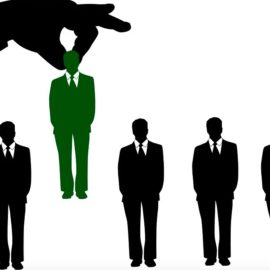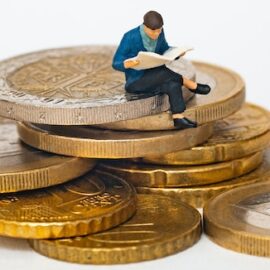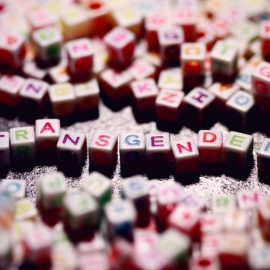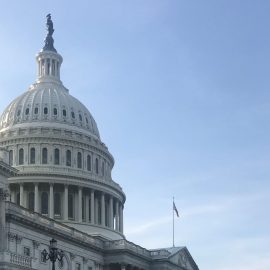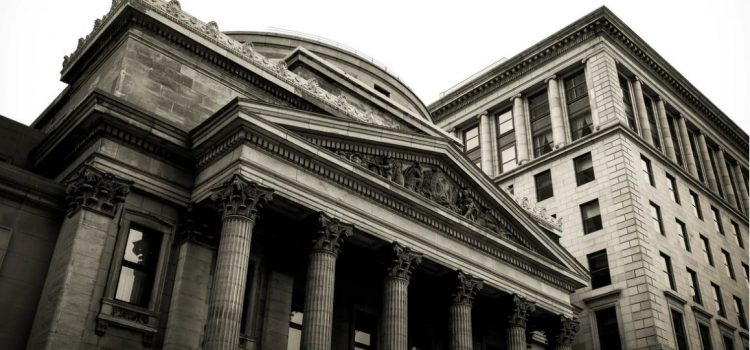
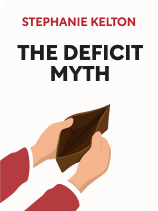
This article is an excerpt from the Shortform book guide to "The Deficit Myth" by Stephanie Kelton. Shortform has the world's best summaries and analyses of books you should be reading.
Like this article? Sign up for a free trial here .
How does the federal reserve set monetary policy? Why does economist Stephanie Kelton believe that the Fed is causing needless suffering in the United States?
In her book The Deficit Myth, Kelton (a believer in modern monetary theory) thinks that the federal reserve is too conservative and overreacts when it comes to the fear of inflation. Kelton and other MMT proponents believe in using a combination of deficit spending and low interest rates to boost demand and create full employment instead.
Below, we will discuss the problems with the Federal Reserve, according to Stephanie Kelton.
How Federal Reserve Policy Hurts the Economy
The Federal Reserve (usually abbreviated as the “Fed”) is the central bank of the United States, tasked with setting monetary policy. The primary way the Fed does this is through controlling interest rates.
Kelton has many problems with the Federal Reserve. In her book, she writes that the Fed has been too conservative in its management of U.S. monetary policy, resulting in needless human suffering and the stifling of the nation’s full economic capacity.
The Fed has consistently overreacted to even the slightest possibility of inflation and has been far too willing to raise interest rates, she says. Because this makes it more difficult to borrow or for people and businesses to pay off debts, these tight-money policies impose a real cost on the economy and on people—imposing unemployment and all the resultant suffering on people who want to find jobs.
Further, Kelton writes that the Fed’s hyper-aggressiveness on inflation is based less on objective facts than on faith. The central bankers there believe there is a “natural” rate of unemployment, and dropping below it will result in uncontrollable inflation. Thus, one of the key aims of Fed policy has been to prevent unemployment from dropping below this level. According to Kelton, this confidence on the part of the Fed isn’t really backed up by recent history—the relationship between employment, inflation, and deficits is far murkier than they believe. She argues that their methods impose needless suffering by deliberately maintaining higher-than-necessary unemployment to stave off inflation.
(Shortform note: Many economists argue that 0% unemployment is an impossible and undesirable policy goal, and that some level of unemployment is necessary in an economy to stave off inflation. In a world in which all workers who were willing and able to work had jobs, employers would be forced to compete for labor by raising wages continually in order to lure workers away from other firms. The increased cost of labor would be passed on to customers in the form of higher prices for the goods and services produced by those workers—while those same workers would in turn demand more goods and services because of their higher wages. This sets off an inflationary dynamic known as the wage-price spiral, in which higher wages lead to higher prices, leading to higher wages, and so on.)
| Early Unemployment Theory The natural rate of unemployment replaced an earlier theory known as the Phillips curve. Created by British economist Williams Phillips, the Phillips curve drew on historical analysis that tracked inflation vs. unemployment in the UK for nearly a century between 1861 and 1957. The data showed that there was a clear inverse relationship between inflation and unemployment: When inflation was high, unemployment was low, and vice versa. In other words, there was a clear trade-off between inflation and unemployment. Critics argued that the Phillips curve created an excuse for politicians during the 1960s and 1970s to engage in inflationary policies—if they ever wanted to reduce unemployment (especially right before an election—all they would need to do was boost inflation. These critics championed the natural rate of unemployment theory as a superior alternative, one that properly accounted for the damaging effects of inflation. |
Close the Output Gap
Kelton contends that modern monetary theory (MMT) offers a better alternative to the harsh and punitive policies of the Fed. MMT proponents argue that fiscal and monetary policy should work in tandem—using a combination of deficit spending and low interest rates to boost demand and create full employment.
Kelton writes that the Fed’s practice of tolerating—and even engineering—mass unemployment through high interest rates is both inhumane and extraordinarily wasteful. Unemployment obviously robs people of their livelihoods, imposes deep psychological wounds, contributes to the impoverishment of children, and decimates communities. But it also keeps the economy from reaching its full productive capacity, contributing to what economists call the output gap—the difference between what the economy could produce given its endowments of land, capital, human talent, and technology; and what it actually is producing.
MMT teaches that deficits are not inherently good or bad—fiscal policy is simply a tool for adding or subtracting dollars from the private-sector economy. The goal of economic policy ought to be the creation of a prosperous, equitable society that maximizes human happiness and broadly distributes its gains on an equitable basis—not simply for the government’s books to balance.
Accordingly, the federal government should use its nearly unlimited fiscal power to keep the output gap as close to zero as possible—regardless of the budgetary impact.
| Inflation and the Biden Covid Relief Package A disagreement over the output gap led to a well-documented debate between center-left economists during the passage of President Joe Biden’s $1.9 trillion Covid-19 relief bill in February 2021. Lawrence Summers, former U.S. Treasury Secretary under Bill Clinton, argued that the Biden package was three times larger than the output gap and would put the economy at much higher risk of inflation. New York Times columnist and Nobel Prize winner Paul Krugman, however, argued that, despite its price tag, the bill would be unlikely to lead to inflation and an overheated economy because much of the money—especially the stimulus checks given to individuals—would be saved rather than spent. Krugman further argued that much of the aid to states and local governments would likely end up being saved in reserve funds rather than directly spent, because there would be less need for emergency spending as the virus abated—and that this would further blunt the bill’s inflationary impacts. It is worth noting, however, that following the bill’s passage, U.S. inflation in October 2021 was 5.4% over the previous year—the highest inflation rate in over a decade.) However, some economists argued that the rise in prices had little to do with the Biden administration’s spending choices and was instead driven by the resurgence in pent-up demand as people began to travel, eat at restaurants, and resume other economic activity following the end of pandemic lockdowns. They argued that these inflationary impacts would ultimately prove short-lived as the economy adjusted to the post-pandemic world and supply aligned better with demand. |

———End of Preview———
Like what you just read? Read the rest of the world's best book summary and analysis of Stephanie Kelton's "The Deficit Myth" at Shortform .
Here's what you'll find in our full The Deficit Myth summary :
- A look at national debt through the lens of Modern Monetary Theory
- How public discourse about national debts and deficits gets the facts wrong
- Why MMT says the U.S. government could finance any program it wishes to create


